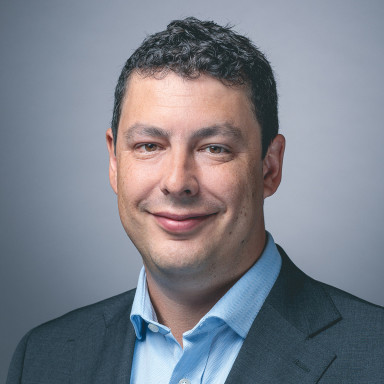The fund provides exposure to corporate bonds, mainly those with Investment Grade credit ratings, offering diversification to a portfolio focused on shares
Kristian Atkinson took over as lead manager on 1 October 2023 and is joined by co-manager Shamil Gohil
The fund will be changing name on 20 March 2025
The fund is on our Wealth Shortlist of funds chosen by our analysts for their long-term performance potential
How it fits in a portfolio
The Fidelity Sustainable MoneyBuilder Income fund aims to provide a relatively steady income and a small amount of growth, without taking excessive risks, by investing in bonds. The three-pillar approach adopted by the managers means this fund can perform a bit differently to peers.
We think the fund could help to diversify an investment portfolio focused on shares, as well as being a useful diversifier within a portfolio focused on providing a high income.
Manager
The fund is co-managed by Kristian Atkinson and Shamil Gohil, following the retirement of Sajiv Vaid at the end of 2023.
Atkinson joined Fidelity in 2000 and worked as a credit analyst until 2013. During his time as an analyst he covered multiple different areas of the bond market, including investment grade, high yield and emerging market debt. He was promoted to fund manager in 2013 and became co-manager of this fund in 2019. Gohil joined Fidelity in 2023 and has over a decade of experience as a bond manager, having worked at PIMCO, BlackRock and most recently HSBC Global Asset Management. He was named as a co-manager on this fund in March 2023.
Atkinson and Gohil benefit from Fidelity's extensive in-house research team to help them put together the portfolio. The duo manage other bond funds too, but they’re supported by a well-resourced fixed income team at Fidelity, so we feel they can comfortably handle their other responsibilities.
Process
Most bond managers analyse the bigger economic picture and Atkinson and Gohil are no different. But we also think a strength of the team is their skill at analysing bond-issuing companies. It helps them determine which are the most attractively priced bonds and should be included in the fund. The managers can invest overseas but investors should expect the fund to retain a strong UK bias.
Atkinson and Gohil adopt a three-pillar approach. They aim to provide a decent level of income, with low volatility compared to peers, and perform differently to funds focused on shares. This tends to lead them to invest less in bonds issued by banks than many peers. This is because banks are sensitive to the wider economy and so their bonds can be more volatile at times.
The portfolio includes collateralised debt, where borrowers have to post security for a loan in the same way you might use a house as collateral for a mortgage. The investor has something to rely on if the borrower doesn't pay money owed to bond holders. This differentiates the fund from some other bond funds who don’t invest as much in these types of bonds. The managers also make use of their ability to invest in lower-risk government bonds and can invest in derivatives, which adds risk. The fund is well diversified, so no single area should have a significant effect on performance.
They have increased their investments in secured bonds over the last year, with around 26% of the fund now invested here. The managers also increased the amount invested in bonds issued by companies in the technology sector. In terms of reductions, they have sold some government bonds and some bonds issued by companies in the utilities sector.
In terms of credit quality, their overall positioning remains broadly similar to how it was at the start of 2024. That said, they’ve reduced investments in AA rated credit (one of the highest ratings available) by 5.7% over the year, in favour of AAA rated credit (the highest rating available), high yield bonds and cash. Investments in high yield bonds add risk.
Overall the managers continue to have a bias towards BBB rated credit, the lowest rated credit available within the investment grade classification. They believe the additional returns available on BBB rated bonds more than compensate for the additional risk taken by investing in them.
Culture
Fidelity is privately owned. This independence should mean it can focus on the long-term interests of investors rather than short-term shareholder demands. The managers are incentivised based on the longer-term performance of the fund. We think this is a positive as it aligns their interests with those of their investors. They do well when their investors do well.
ESG Integration
The team formalised integration of ESG analysis in 2022. This has meant increased levels of engagement and the exclusion of companies involved in controversial areas, such as weapons, tobacco, thermal coal and gambling. The managers have also avoided companies violating the UN Global Compact – a UN pact on human rights, labour, the environment and anti-corruption.
However, under the FCA’s Sustainable Disclosure Requirements (SDR), this fund has not been awarded a label. This means that the fund name will be changing to Fidelity MoneyBuilder Corporate Bond on 20 March. It also means that the exclusions put into place will no longer be formal restraints that the managers have to stick to.
At a wider business level, Fidelity has committed to improving its approach to ESG in recent years. They’ve developed a structured engagement program which allows them to be more systematic in their engagement on environmental and social issues, become involved in more collaborative engagement initiatives and introduced ESG data into fund managers’ quarterly reviews to raise awareness of ESG issues. The firm has also bolstered its dedicated ESG team, which writes regular ESG reports on companies that Fidelity fund managers invest in. The firm votes where it is possible to do so and quarterly voting reports are posted online, complete with rationales for votes against management and abstentions.
In June 2019, Fidelity launched its own proprietary ESG ratings tool. It scores thousands of companies based on their ESG credentials on a forward-looking basis, with investment analysts tasked with the job of ensuring the ratings are up to date. The ratings system was later updated to include an assessment of each company’s ability to manage negative externalities. Fidelity also developed a climate rating which highlights companies where engagement is most necessary if the firm is to achieve its aim to halve portfolio emissions by 2030 and reach net zero by 2050.
While Fidelity has made strides forward at the firm level, we don’t think this has fully fed through to the fund level. Although there is plenty of ESG information available to all Fidelity fund managers, we’re not yet convinced they all put it to full use.
Cost
The fund has an annual ongoing charge of 0.54%, but we’ve secured HL clients an ongoing saving of 0.20%. This means you’ll pay a net ongoing charge of 0.34%. The fund discount is achieved through a loyalty bonus, which could be subject to tax if held outside an ISA or SIPP. The HL platform fee of up to 0.45% per year also applies, except in the HL Junior ISA, where no platform fee applies.
Please note the fund's charges can be taken from capital rather than income. This increases the yield but reduces the potential for capital growth.
Performance
Since Atkinson became a named manager on this fund at the start of 2019, it has underperformed the IA £ Corporate Bond sector average, returning 6.00%* compared with 9.68%. It’s outperformed its benchmark though, which returned 5.28% over the same period. Past performance is not a guide to future returns.
We think the mangers are relatively cautious investors, so ordinarily the fund is managed conservatively with a focus on companies less likely to default on their debts. This means it could lag the benchmark during good times, but provide some shelter when markets fall. This wasn’t the case during 2022 however, where the fund underperformed the peer group and benchmark during a period where bonds generally lost a lot of value.
Over the last 12 months, the fund has underperformed peers, returning 4.28% compared to the sector average return of 4.77%. It’s outperformed its benchmark return of 3.89% though. Compared to the benchmark, the fund’s higher than average yield helped performance. Their bond selection was also positive, adding to returns for the year. Bonds from CPI Property Group, Mitchells & Butlers and the AA are examples of specific bonds that performed well for the fund.
It wasn’t all good though, with many bonds they didn’t invest in doing particularly well, such as bonds issued by KFW and European Investment Bank. This hurt performance compared to peers, as did their lower amount invested in bonds issued by banks more generally, with bonds from the sector performing well over 2024. Having a lower amount invested in bonds issued by banks is a long-term position for the fund and reflects their defensive approach. These bonds are typically more sensitive to changes in interest rates and the wider economy compared to other areas of the market.
Their duration positioning also hurt performance over the year. Duration is measured in years and reflects how sensitive the fund is to interest rate changes. The higher the duration figure, the more sensitive the fund is to interest rate changes. The managers have had a slightly higher duration than the benchmark which has hurt as expectations about how much interest rates will be cut have reduced. As at 31 December 2024, the fund’s duration was 6.2 years, compared to the benchmark figure of 5.6 years.
As of 31 December 2024 the fund had a yield to maturity of 5.7%, though yields are not a reliable indicator of future income and income isn’t guaranteed.
Annual percentage growth
31/01/2020 to 31/01/2021 | 31/01/2021 to 31/01/2022 | 31/01/2022 to 31/01/2023 | 31/01/2023 to 31/01/2024 | 31/01/2024 to 31/01/2025 | |
|---|---|---|---|---|---|
Fidelity Sustainable MoneyBuilder Income | 3.85% | -3.20% | -13.85% | 3.99% | 4.28% |
ICE BofA Euro-Sterling Index | 4.09% | -4.99% | -12.25% | 3.82% | 3.89% |
IA £ Corporate Bond | 4.44% | -3.51% | -11.19% | 4.33% | 4.77% |


